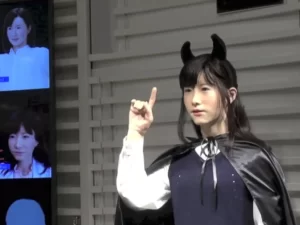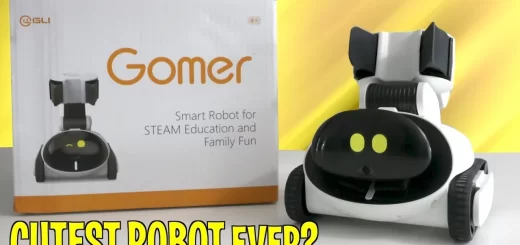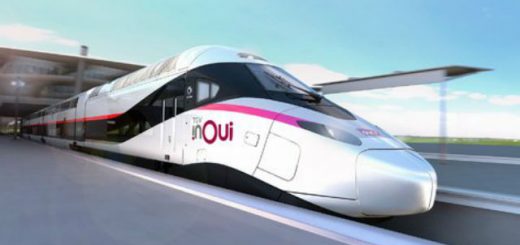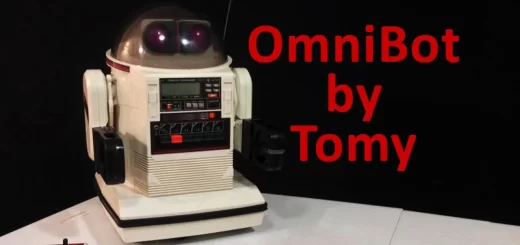Junko Chihira robot advantages, disadvantages, What is Junko Chihira contribution to AI?
Junko Chihira could act as an interactive language learning partner, offering a personalized learning experience for students. She could guide patients through rehabilitation exercises or provide motivational feedback, assisting with physical therapy.
Junko Chihiro robot
Junko Chihira, a pioneering trilingual android, is a master of languages! Unlike most robots, she can converse in not just one, but three languages: Japanese, English, and Chinese. Some speculate her name, Junko, which can mean “pure” or “obedient” in Japanese, and Chihira, meaning “a thousand suns” might be a nod to her versatility and potential to be used in diverse situations.
While fashion might not be her main focus, Junko Chihira’s design choices are interesting. She sported a sleek bob haircut and a colorful scarf in early demonstrations, making her one of the first robots to have a somewhat fashionable touch.
Junko Chihira‘s language skills weren’t set in stone. Her developers designed her to learn and improve her conversational abilities over time. Junko Chihira‘s debut in 2014 marked a significant step in humanoid robots with multilingual capabilities. She paved the way for further advancements in human-robot interaction.
Imagine a robot language tutor! Junko Chihiro’s ability to converse in multiple languages could make her a fun and interactive tool for learning a new language. Junko Chihiro’s development represents a significant leap in humanoid robotics. Her multilingual skills open doors to a future where robots can bridge communication gaps across cultures.
Perhaps her name hints at her potential to explore uncharted territories in human-robot interaction. Though some sources refer to her as Junko Chihira, “Junko Chihiro” seems to be the more accurate spelling.
Junko Chihira is a real-life translator bot! Unlike some industrial robots, Junko Chihira has a friendly and expressive appearance. Her design makes her more approachable to people interacting with her.
Back in 2014, Junko Chihira held the Guinness World Record for the most conversation topics (10,000!) a humanoid robot could handle. Unlike many robots designated by model numbers, Junko Chihira has a unique name. This might be because she was designed for more human-like interaction.
Junko Chihiro wasn’t built for factory work. Toshiba, her creators, designed her for human interaction. She can hold basic conversations, potentially offering companionship to people who might be lonely or isolated.
Junko Chihira represents an exciting step in humanoid robots, particularly for their potential applications in communication and social support. Her ability to engage in basic conversation can provide emotional support to people experiencing loneliness, especially in healthcare settings.
Advantages of Junko Chihira Robot
Junko Chihiro is a real conversation starter! Unlike most robots, she can chat in three languages – Japanese, English, and Chinese, making her a valuable tool for overcoming language barriers in various fields like customer service or education.
Junko Chihira could assist with rehabilitation therapy by guiding patients through exercises or providing motivational feedback to aid recovery. She could act as an interactive language learning partner and potentially offer personalized learning experiences.
Junko Chihira could provide information and customer service in multiple languages, improving accessibility. Junko Chihira could be a helpful partner in language learning, offering interactive experiences for students.
Junko Chihira is a valuable tool in fields like customer service where overcoming language barriers is crucial. Junko Chihira’s ability to interact with people can provide comfort and reduce feelings of loneliness or isolation.
Junko Chihira has the potential to help people with daily tasks, although the extent of this is not fully explored yet. She can provide basic conversation and greetings, potentially offering companionship.
Disadvantages of Junko Chihira Robot
Junko Chihira‘s current abilities are focused on basic conversation and pre-programmed tasks. She may not be able to understand complex situations or provide deep emotional support or respond with nuanced emotions. Advanced robots like Junko Chihira can be expensive to develop, purchase, and maintain.
Her responses and movements may seem artificial, potentially hindering the quality of companionship or language learning. The use of humanoid robots raises questions about human-machine interaction and the potential for job displacement.
Research and development of robots like Junko Chihira can be expensive, impacting how widely available they become. Junko Chihira’s physical capabilities and dexterity might not match those of a human, restricting the range of tasks she can perform.
You can follow Science Online on Youtube from this link: Science online
You can download Science Online application on Google Play from this link: Science Online Apps on Google Play
Advantages and disadvantages of using robots in our life
Elias robot review, advantages, disadvantages, and What robot teaches languages?
Robot teachers use, types, advantages, and disadvantages
Educational robotics, Robot teachers, Social robots review, features advantages and drawbacks
Artificial intelligence in education, AI tutors features, advantages and disadvantages
Pros and cons of technology in education and Can technology replace teachers?
The importance and uses of educational robotics for students




